As a dedicated solo female traveler, I’ve explored numerous corners of our stunning world. Today, I’m thrilled to share coveted travel tips for Venezuela itinerary which was my 83rd country, and as some of you know, I’m on a quest to visit all UN-recognized countries. Your support in sharing my blog posts or socials means the world to me!
Venezuela, often described as “The Most Dangerous Country in the World” due to its high crime index of 83.76, the highest of any country in the world, and political instability, is a destination that few travelers dare to explore.
Despite its challenges, this beautiful country captivates with its untamed untouched beauty and rich cultural heritage, making it a compelling destination for adventurous souls.
During my travels through North, Central, and South America over the last three years, I did not meet anyone who had recently visited Venezuela. Even Venezuelans I encountered along the way advised against traveling there, citing that it is not the right time for tourists.
However, driven by my passion for discovery and a thirst for the unknown, I embarked on a journey to uncover the secrets of this enigmatic land. This itinerary and travel tips are a reflection of my experiences and offer valuable insights for those seeking to venture off the beaten path. If you follow me on instagram, you can see more pictures/videos.
Travel tips for Venezuela itinerary
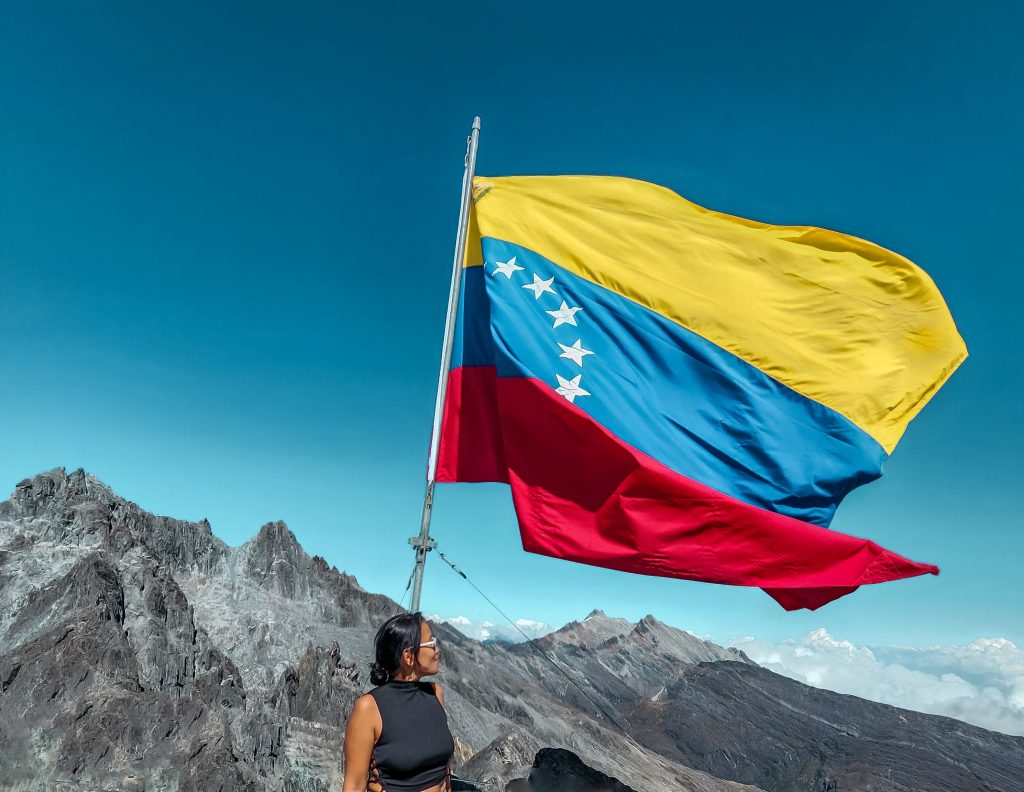
Pre-Trip Planning
Before embarking on your journey to Venezuela, there are several important aspects to consider:
- Visa Requirements:
- Google the visa requirements for your nationality. Venezuela may require a visa for entry, so ensure you have the necessary documentation. For an Australian passport visa is not required but you never know when the rules will be changed so make sure to double-check time and again. (I say this because I didn’t check for a month and visa requirements had changed for Chile within that period and I was denied entry the first time I was there in 2021 so, I traveled to Peru instead. This year in 2024 similar issue with Brazil changing their mind regarding visas for Australian passport holders)
- Have onward fight or existing transport ready to show.
- At the airport when leaving the country, the security officer wanted to see a physical print-out boarding pass for some reason so mobile check-in was meaningless here.
- Google the visa requirements for your nationality. Venezuela may require a visa for entry, so ensure you have the necessary documentation. For an Australian passport visa is not required but you never know when the rules will be changed so make sure to double-check time and again. (I say this because I didn’t check for a month and visa requirements had changed for Chile within that period and I was denied entry the first time I was there in 2021 so, I traveled to Peru instead. This year in 2024 similar issue with Brazil changing their mind regarding visas for Australian passport holders)
- Best Time to Visit Venezuela:
- In Venezuela, the climate varies greatly depending on the region due to its diverse geography. Generally, the country experiences a tropical climate with a wet season and a dry season. Here’s an overview of the seasons in Venezuela:
- Dry Season (December to April): This is considered the best time to visit Venezuela, especially for outdoor activities and sightseeing. The weather is generally most stable, sunny, and dry during this period, making it ideal for traveling and exploring the country.
- Wet Season (May to November): The wet season in Venezuela is characterized by heavy rainfall, particularly in the northern and central regions. The rain can be quite intense and prolonged, leading to flooding and landslides in some areas. Traveling during this time can be challenging, but it also brings lush green landscapes and fewer crowds.
- It’s also important to note that Venezuela’s climate can vary significantly from one region to another. For example, the Andes Mountains experience cooler temperatures year-round, while the coastal areas are hot and humid. It’s advisable to check the specific weather conditions of the regions you plan to visit before finalizing your travel plans.
- In Venezuela, the climate varies greatly depending on the region due to its diverse geography. Generally, the country experiences a tropical climate with a wet season and a dry season. Here’s an overview of the seasons in Venezuela:
- Safety Considerations and Travel Advisories:
- Venezuela has experienced high levels of crime and political instability in recent years. It is important to stay informed about the current situation and to exercise caution, especially in urban areas. More tips on solo female travels coming below.
- Check for any travel advisories issued by your government or reputable sources but I would say take it with a grain of salt.
- I didn’t have travel insurance but if it makes you feel safe buy comprehensive travel insurance that covers medical expenses, trip cancellations, and other unforeseen circumstances.
- It’s recommended to drink bottled water and avoid tap water to prevent water-borne illnesses. Carry any necessary medications and a basic first-aid kit.
- Have all the required vaccines for your health. Recommend the yellow fever vaccine as I was asked for it and also if you are from Australia, when coming back border officers will ask you for it too.
- Venezuela has experienced high levels of crime and political instability in recent years. It is important to stay informed about the current situation and to exercise caution, especially in urban areas. More tips on solo female travels coming below.
By considering these factors and staying informed, you can better prepare for a safe and enjoyable trip to Venezuela.
10 Days Venezuela itinerary and travel tips
For accommodation, I recommend using booking.com and sorting with price, then consider the ones with highest reviews plus within 1km of center/old town. Below I have researched and linked the best ones with this filter (at the time of writing)
For tours, I recommend using get your guide and walking tours available in most places
Day 1: Arrival in Caracas
Upon arriving at Simón Bolívar International Airport, you’ll be greeted by the bustling energy of Venezuela’s capital city. Here’s what to expect and how to make the most of your first day:
1. Arrival at Simón Bolívar International Airport:
- The airport is located about 13 kilometers (8 miles) from downtown Caracas, so you can expect about 20-30 mins drive to the city center.
- Was asked about 5 questions at immigration the usual Where are you staying etc and also asked to see my flights/route back home.
- I couldn’t access Free WIFI at the airport. There are ATMs, currency exchange, and some cafes upon arrival.
2. Transportation options to the city center:
- Taxi: Taxis are available at the airport and offer a convenient way to reach the city center. Make sure to use licensed taxis and negotiate the fare before starting your journey.
- Public transportation: The airport is served by buses that can take you to various parts of Caracas. However, public transportation in Caracas can be crowded and confusing for first-time visitors.
- I had arranged a private taxi from my Airbnb host, which cost USD 30.
3. What currency do they use in Venezuela?
In Venezuela, the official currency is the Venezuelan Bolívar (VES). However, due to the country’s economic instability, the use of the Bolívar has been greatly affected resulting in hyperinflation leading to a severe devaluation of the currency.
As a result, other currencies, such as the US dollar and the Colombian peso, are also commonly used in transactions although the latter is mostly in border town to Colombia.
With that said, bring USD. I exchanged my AUD for USD before landing and was using it straight away.
My Master Credit Card didn’t work but Visa Debit worked just fine although every time I bought something like fruits or water I had to provide my passport number. It only happened in Caracas though and other towns didn’t ask for it.
I encountered the same issue of them “not having enough money for a change” in a few places so recommend bringing small notes rather than more than 1 big USD note. Bring tons of $1, $5 or $10 bills.
Another thing to note is, when you get change back, most of the time it is a mix of USD and Bolívar so you have to do the mental math real quick to see if it’s the correct change. Gets harder in the border town tho because you could get change back in the mixed form of the Colombian peso, USD, and VES. Good luck!
4. Accommodation recommendations in Caracas:
Caracas offers a range of accommodation options to suit every budget and preference. From luxury hotels to budget hostels, you’ll find plenty of choices in the city center. Here are some recommendations on accommodations in Caracas.
Some recommended areas to stay in in Caracas which are known for their safety and proximity to attractions.
Altamira: Known for its upscale vibe, Altamira offers a mix of luxury hotels, boutique accommodations, and upscale shopping and dining options. It’s a safe and convenient area for tourists.
Chacao: Chacao is a vibrant district known for its cultural attractions, including museums, art galleries, and theaters. It offers a range of accommodation options, from budget hotels to upscale properties. This is where I stayed and recommend it.
El Rosal: El Rosal is a commercial and financial district with a mix of hotels, restaurants, and shopping malls. It’s a convenient area for business travelers and offers easy access to public transportation.
La Candelaria: La Candelaria is the historic heart of Caracas, known for its colonial architecture and cultural attractions. It offers a range of budget and mid-range accommodation options, as well as easy access to the city’s main sights.
Los Palos Grandes: This neighborhood is known for its tree-lined streets, upscale boutiques, and trendy restaurants. It offers a mix of luxury hotels and boutique accommodations, as well as a lively nightlife scenes/
5. Getting a Local SIM Card in Caracas
Staying connected is essential while solo traveling, and getting a local SIM card in Caracas is a straightforward process. No, let me take that back, it was an hour-long process which was a bit annoying. Here’s a step-by-step guide:
Compatibility: Ensure your phone is unlocked and compatible with the local network bands. Venezuela uses GSM technology, so most modern phones should work.
Choose a Provider: There are several telecom providers in Venezuela, including Movistar, Digitel, and Movilnet. Movistar and Digitel are known for having better coverage in urban areas.
Purchase a SIM Card: SIM cards are ONLY available at big official stores.
At first, I went to a small Digitel phone shop in Chacao but said, Digitel was done and they weren’t selling any SIM CARDS anyway. So I just walked to a shopping mall called Sambil Chacao nearby. As you enter on the first floor, take a left walk till the very end till you see the Moviestar sign on a shop on your right.
Identification: You’ll need to present your passport for identification and also need to do “old style fingerprints” when purchasing a SIM card! This is a standard requirement in Venezuela. Don’t worry they will give you an old handkerchief to wipe off the excess blue ink from your thumbs.
Registration: Your SIM card will need to be registered before it can be activated. The store or vendor will assist you with this process. However, the issue was the shop didn’t have enough change to give me. So they asked if it was ok with me if they charged $4 extra to round up to $20.
FYI – I encountered the same issue of “not having enough money” in a few places so recommend bringing small notes to more than 1 big USD note. Like $tons of $1, $5 or $10 bills.
Anyway, in the shop, a few more people started coming and it got busy and all up it took an hour for ladies to complete the process. Oh, and I got my correct change back in the end! Probably change from other people that came in.
Top-Up: Purchase credit (recarga) to top up your SIM card. This can be done at convenience stores, pharmacies, and authorized retailers. Just look for signs that say “SIM Card” or “Chip” or the best is to top up online from your phone.
Activation: Once your SIM card is registered and topped up, it should be activated. Follow the instructions provided by the vendor or telecom company.
Configuration: Your phone may require manual configuration for mobile data and other services. The vendor or telecom company can assist you with this if needed.
Costs: Prices for SIM cards and credit vary depending on the provider and the amount of data or minutes included. Budget around $10-16 for a basic package.
Coverage: While urban areas like Caracas generally have good coverage, rural and remote areas may have limited or no coverage.
Moviestar was fine for Caracas but if you are heading to Choroni which is my absolute favorite place in Venezuela make sure you have a Digitel SIM CARD because Movistar doesn’t work there unless you climb a hill every time for reception!
6. Do you have to be fluent in Spanish for Venezuela?
Spanish is the official language spoken in Caracas and throughout Venezuela. So language might be a barrier if you don’t speak Spanish.
While some people in tourist areas and hotels may speak English, the majority of the population speaks Spanish. I recommend learning some basic Spanish phrases or carrying a phrasebook to help you communicate with locals. Being able to speak Spanish will enhance your travel experience and make it easier to navigate the country.
Alternatively, download the offline Spanish language on Google Translate so even when you don’t have internet you can communicate locally.
Either way, here are some basic phrases:
Hi/Hello = ¡Hola!
Yes = Sí
No = No
Thank you = Gracias
You are welcome = De nada
See you = Nos vemos
Where is the bathroom = ¿Dónde está el baño?
Where is the hotel = ¿Dónde está el hotel?
7. How to get around Venezuela?
Getting around Venezuela can be a bit challenging due to the country’s size and diverse terrain. Here are some common ways to travel within Venezuela:
Domestic Flights: Domestic flights are the fastest way to travel between major cities in Venezuela. Airlines such as Conviasa and Laser Airlines operate flights to destinations across the country.
Buses: Buses are the most common form of long-distance travel in Venezuela. There are different classes of buses, ranging from basic to luxury, with varying levels of comfort and amenities. I mostly used night buses! I will cover more in terms of routes on the itinerary below.
Taxis: Taxis are available in most cities and towns in Venezuela. It’s advisable to use licensed taxis and negotiate the fare before starting your journey. In some cities, there are also motorcycle taxis known as “mototaxis.”
Rental Cars: Renting a car is an option for exploring Venezuela, especially if you plan to visit remote areas or off-the-beaten-path destinations. However, driving in Venezuela can be challenging due to poor road conditions and aggressive driving habits.
Boats: I heard that in regions like the Orinoco Delta or the Amazon rainforest, boats are a common mode of transportation. Riverboats and ferries are used to navigate the country’s extensive river systems.
Walking and Cycling: In cities like Caracas or Mérida, walking or cycling can be a good way to explore local attractions. However, be cautious of traffic and pedestrian safety.
4×4 Vehicles: In some rural areas or national parks, 4×4 vehicles may be necessary to navigate rough terrain.
8. Useful Apps for Venezuela
While traveling in Venezuela, you can enhance your experience and make your journey more convenient with the help of several useful mobile apps. Here are some essential apps to consider:
Maps. me or Google Maps: This offline mapping app allows you to download detailed maps of Venezuela and navigate without an internet connection. It’s useful for exploring cities and remote areas.
WhatsApp: This messaging app is widely used in Venezuela for communication. You can use it to stay in touch with hostels, hotels, tour companies, make calls, and send messages over Wi-Fi or mobile data.
XE Currency: Stay updated on the latest exchange rates with this currency converter app. It helps convert prices to your home currency and manage your budget.
Google Translate: Overcome language barriers with this translation app. It can translate text, speech, and even images, making it easier to communicate in Spanish. Make sure to download Spanish language and it works offline too.
Venezuela Metro: If you’re planning to use the metro in Caracas, this app provides information on routes, schedules, and station locations.
Yummy Rides: Uber doesn’t work in Venezuela so if you want to order transport after you get your sim card with data, don’t forget to download Yummy Rides.
Ridery: Another alternative to yummy rides is riderly. Both apps work the same way as Uber.
SOSAFE: This safety app allows you to report emergencies and receive real-time alerts about incidents in your area. It’s useful for staying safe in unfamiliar surroundings.
9. Is Venezuela safe for solo female travelers?
Before solo traveling in Venezuela, everything I read said that Venezuela is not considered a safe destination for solo female travelers. The country has high crime rates, including incidents of violent crime, theft, and kidnapping. Political and economic instability have exacerbated these issues, leading to a challenging environment for travelers. So every news outlet was advising to exercise caution and take additional safety precautions if traveling to Venezuela.
While I agree with some of it overall, I felt safe in Venezuela even on the night buses. Always assess the risks and take necessary precautions if needed. Here are some factors to consider:
Use Reputable Accommodations: Choose well-reviewed and reputable accommodations for your stay. This can enhance your safety and provide a reliable home base during your trip.
Stay Aware of Your Surroundings: Like in any destination, it’s essential to stay aware of your surroundings. Be cautious when walking alone at night and avoid poorly lit or deserted areas.
Use Licensed Transportation: When using taxis or ride-sharing apps, ensure you’re using licensed and well-established services. Always negotiate the fare or use the meter before starting your journey.
Trust Your Instincts: If something doesn’t feel right, trust your instincts and remove yourself from the situation. It’s always better to err on the side of caution.
Secure Your Belongings: Keep your belongings, such as passports, money, and electronics, secure in your accommodation, or wear a small bag/ money belt while on the go.
Local Contacts: Establish local contacts or friendships if possible. Locals can provide valuable insights and assistance during your trip.
Cultural Sensitivity: Show respect for local customs and traditions, especially when visiting religious or cultural sites. This helps you to blend in and fosters positive interactions.
Learn Some Local Phrases: While few people in Venezuela, especially in urban areas, speak English, learning a few basic Spanish phrases can be helpful and appreciated by the locals.
Etiquette: Venezuelans are known for their warm hospitality, so it’s important to be respectful and polite. Greet people with a friendly “Buenos días” (good morning) or “buenas tardes” (good afternoon).
10. How many days in Venezuela is enough?
The number of days needed to explore Venezuela depends on your interests and the places you want to visit. However, to get a good overview of the country’s diverse attractions, a minimum of 7-10 days is recommended. This allows you to visit popular destinations such as Caracas, Choroni, Angel Falls, Los Roques National Park, Mérida, and the Andes region.
If you have less time, you can still enjoy a shorter trip focusing on specific regions or attractions. For example, a 5-7 day itinerary could include highlights like Caracas, Mérida, and a visit to the Angel Falls but it will be jam-packed.
Keep in mind that Venezuela is a large country with diverse landscapes, so travel times between destinations can be long. It’s important to factor in travel time when planning your itinerary to make the most of your visit.
11. What food to try in Venezuela?
Venezuelan cuisine is rich and flavorful, reflecting the country’s diverse cultural influences. Here are some must-try dishes:
Arepa: A staple of Venezuelan cuisine, arepas are cornmeal cakes that are grilled, baked, or fried and can be filled with a variety of ingredients such as cheese, meat, or avocado.
Pabellón Criollo: Venezuela’s national dish, pabellón criollo, is a hearty meal consisting of shredded beef, black beans, rice, and fried plantains.
Cachapa: A sweet corn pancake that is usually filled with cheese and served as a snack or breakfast dish.
Hallaca: A traditional Christmas dish, hallaca is a type of tamale made with cornmeal dough and filled with a mixture of meat, raisins, and olives, then wrapped in plantain leaves and steamed.
Ajiaco: A hearty soup made with chicken, potatoes, corn, and other vegetables, flavored with cilantro and aji peppers.
Tequeños: Fried cheese sticks wrapped in pastry dough, often served as an appetizer or snack.
Papelon con Limon: A refreshing drink made with sugarcane juice, lemon juice, and water, sweetened with papelon (unrefined cane sugar).
Tostones: Twice-fried plantain slices, often served as a side dish or appetizer.
10 days Venezuela itinerary
I am aware this blog is getting a tad bit long so, let’s get straight to my route. Caracas – 3 days which was enough, then I decided to head to Merida because I am more of a mountain person and I also love hidden gems so went to check out Choroni which I enjoyed.
As you noticed I didn’t go to Angel Falls in Canaima National Park because first of all, there are only 2 flights a week from Canaima which is the starting base for Angel Falls, and even if I were to get on a flight from Caracas to Puerto Ordaz (PZO), there was no flight from PZO to Canaima. Plus a tour agent said it’s the dry season so they weren’t running any tours to falls and another quoted me in thousands. It just didn’t feel like the right time for me you know.
Yeah, I understand it is stunning but I have seen many many waterfalls in my life and I wasn’t about to make my life harder than it already is.
Also, I didn’t feel like going to Isla Margarita or Los Roques because famous places mean tons of people and I wanted some peace.
Anyway, let me break it down for you:
Day 2-3: Explore Caracas
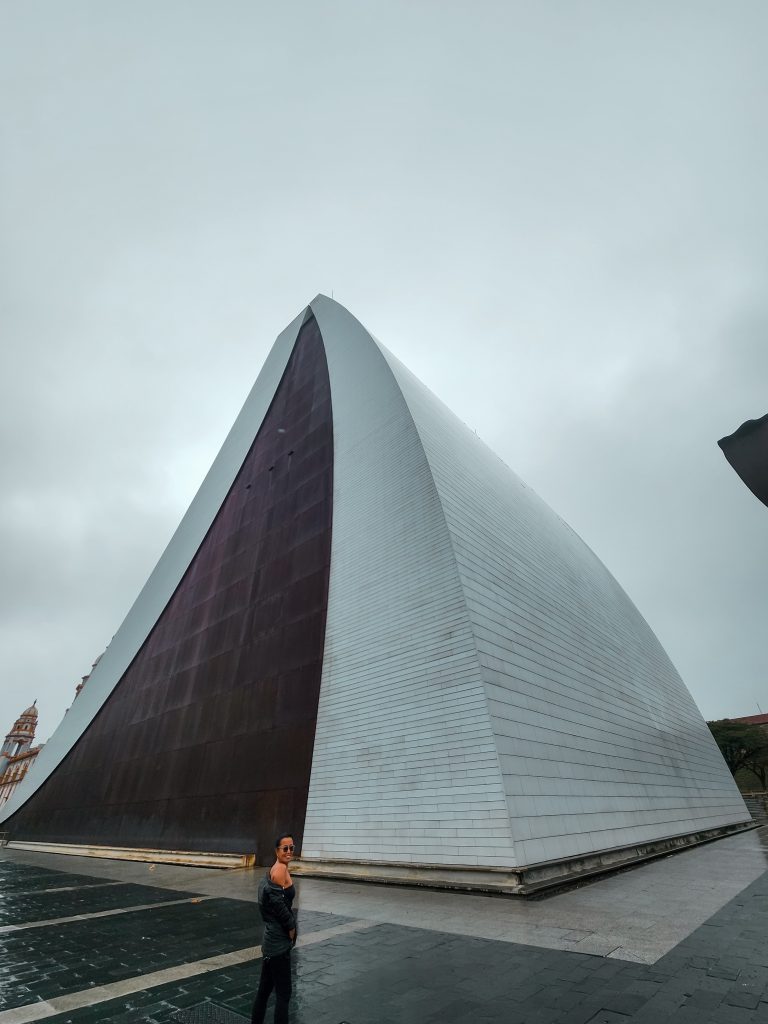


Spend your second and third days in Caracas immersing yourself in the city’s rich history, culture, and natural beauty. Here’s what I did mixed with a suggested itinerary:
Visit to the historic center (El Centro): Explore the historic heart of Caracas, where you’ll find colonial-era buildings, bustling markets, and lively plazas. Don’t miss the iconic Plaza Bolívar, home to the Caracas Cathedral and the historic Bolívar statue.
Explore museums such as the Museum of Fine Arts and the National Art Gallery: Dive into Venezuela’s art and history with visits to the Museum of Fine Arts and the National Art Gallery. These museums house impressive collections of Venezuelan and international art, including works by renowned artists such as Armando Reverón and Carlos Cruz-Diez.
Excursion to Avila National Park for hiking or cable car ride: Escape the city’s hustle and bustle with a visit to Avila National Park, which offers stunning views of Caracas and the surrounding mountains. Hike one of the park’s many trails or take a ride on the Teleférico de Ávila cable car for panoramic views of the city below.
Dining and nightlife recommendations in Caracas: Experience Caracas’s vibrant dining scene with a visit to one of its many restaurants. Try traditional Venezuelan dishes such as arepas or pabellón criollo, or sample international cuisine at one of the city’s upscale eateries. For nightlife, head to areas like Las Mercedes or Altamira, where you’ll find a variety of bars, clubs, and live music venues.
By spending two days exploring Caracas, you’ll get a taste of the city’s rich culture, history, and natural beauty, setting the stage for the rest of your Venezuelan adventure.
If DIY is too stressful for you, below are some recommended tours for Venezuela from trusted get your guide.
Days 4-7: Mérida
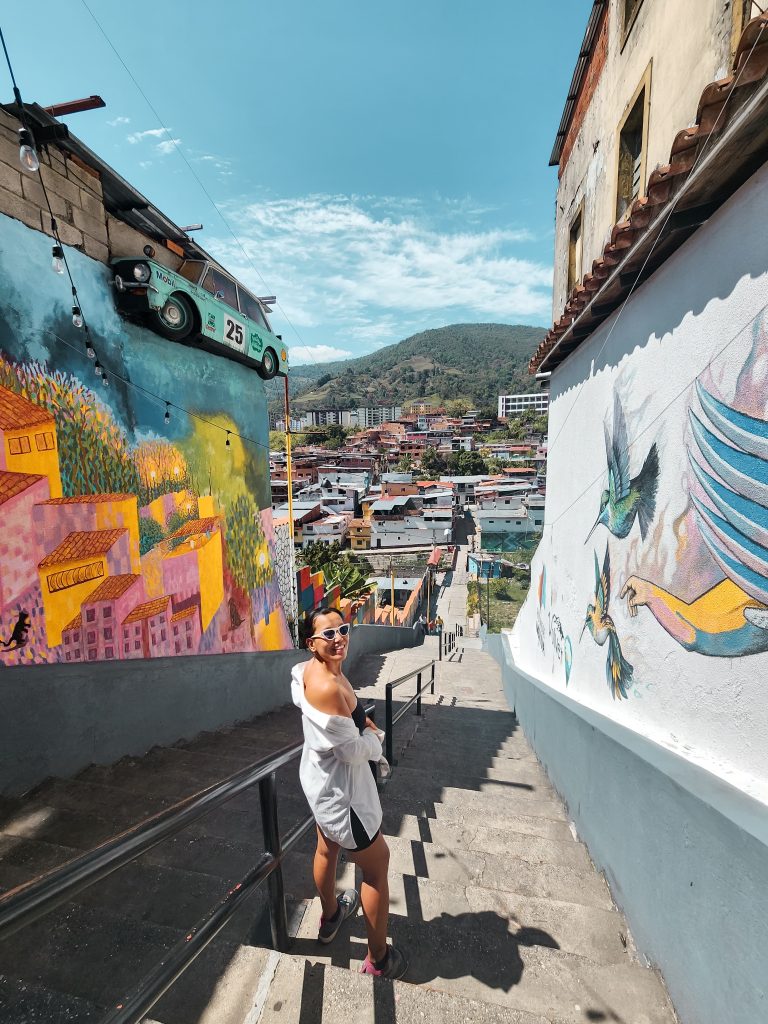
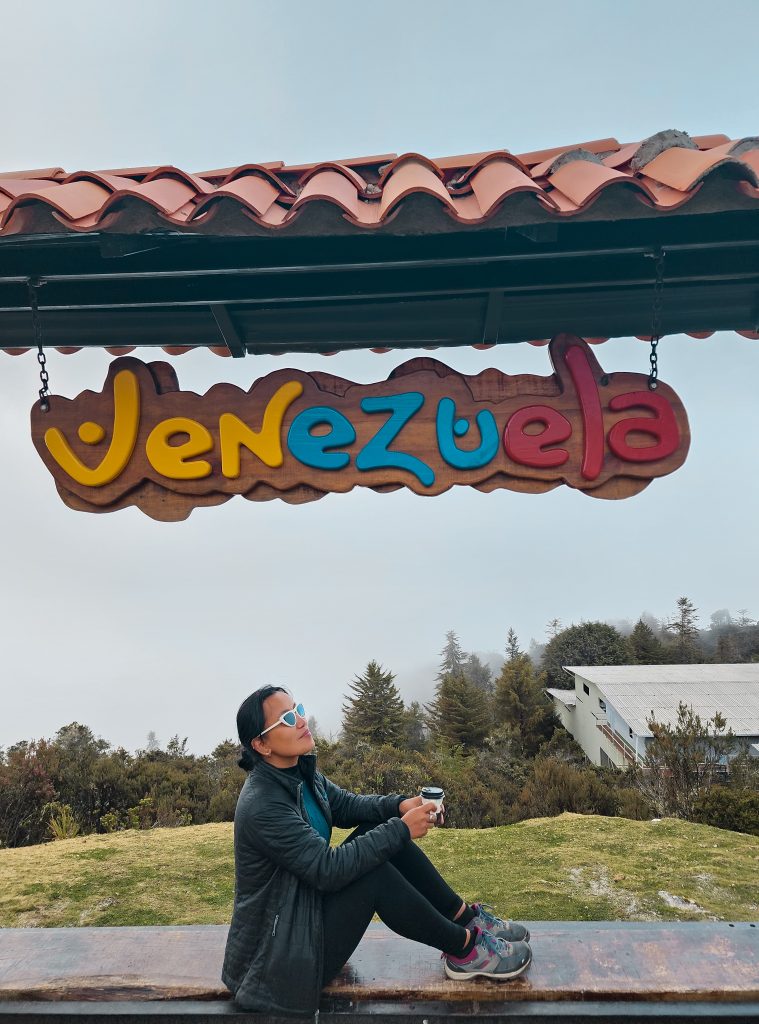
The next destination I chose in my Venezuela itinerary was Merida, a cozy town nestled in the Andes mountains, known for its colonial architecture, vibrant culture, and stunning natural beauty. Here’s how to make the most of your time:
Travel to Mérida by bus or plane: Depending on your preference and budget, you can take a scenic bus ride through the Andes or a quick flight to Mérida’s Alberto Carnevalli Airport.
I took a night bus from the Terminal de Pasajeros La Bandera in Caracas to Merida. Felt comfy because I was next to a friendly local girl from Merida and the bus ride was smooth. It stopped around midnight for food and had no idea where I was but I had been on enough night buses by now so I knew the drill. 1 USD for the bathroom, had an oily empanada for dinner 2 USD, small 500 ml water 3 USD, a bit of waiting around and back in the bus.
Buying that bus ticker was another story. Luckily I had met a local Venezuelan at my Airbnb who helped me buy it online so I didn’t have to go to the bus station and back.
Where to stay in Merida, Venezuela?
Here are some options for accommodations in Merida, Venezuela. Also, check on Airbnb for some other options and If you still can’t find anything for your budget in Airbnb, go on Google Maps and Type “Posada” (these are what Bed and breakfast, and guest-type accommodations are but most are not in booking dot com) message/ email them directly or book it on google if that option is available but I would still encourage to email to have written confirmation of your stay.
Highlights of Merida
Explore the Andean town: Wander through Mérida’s historic center, characterized by its well-preserved colonial architecture. Visit Plaza Bolívar, the heart of the town, I love the Merida sign and explore local markets and artisan shops.
Visit the Mérida Cable Car: Experience the breathtaking views of the Andes mountains with a ride on the Mérida Cable Car, the longest and highest cable car in the world! The cable car takes you up to Pico Espejo, where you can enjoy panoramic views of the surrounding mountains and valleys. My ticket was the standard price for foreigners but to my surprise, it also offered a VIP entry, VIP seat, and views!
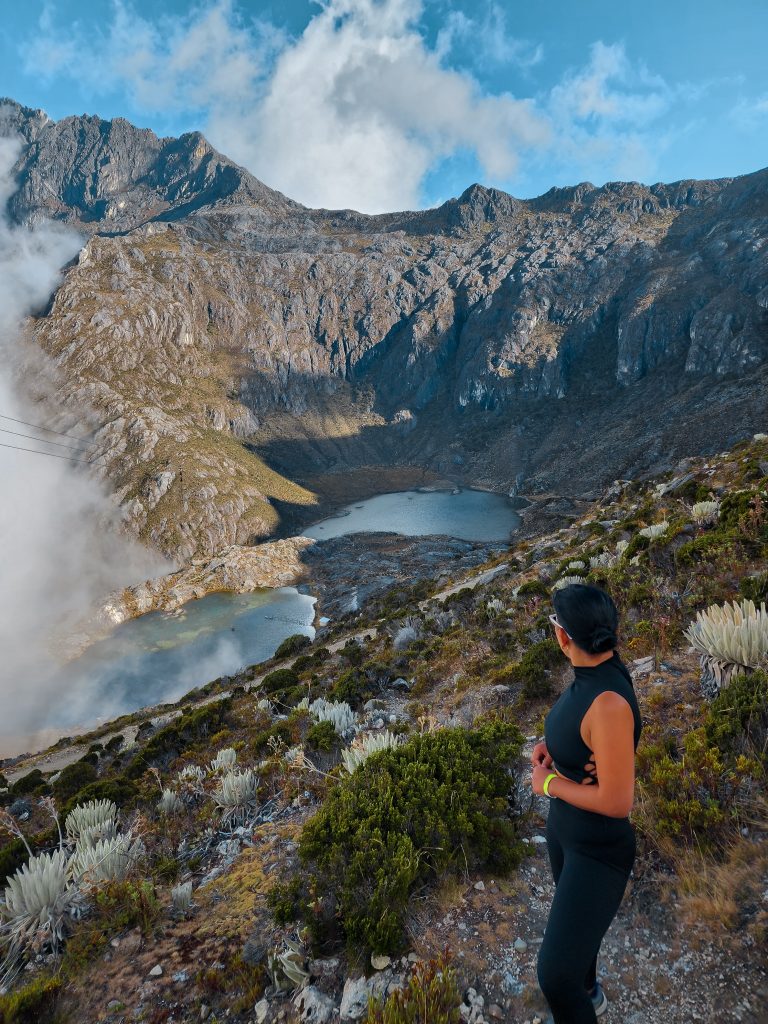
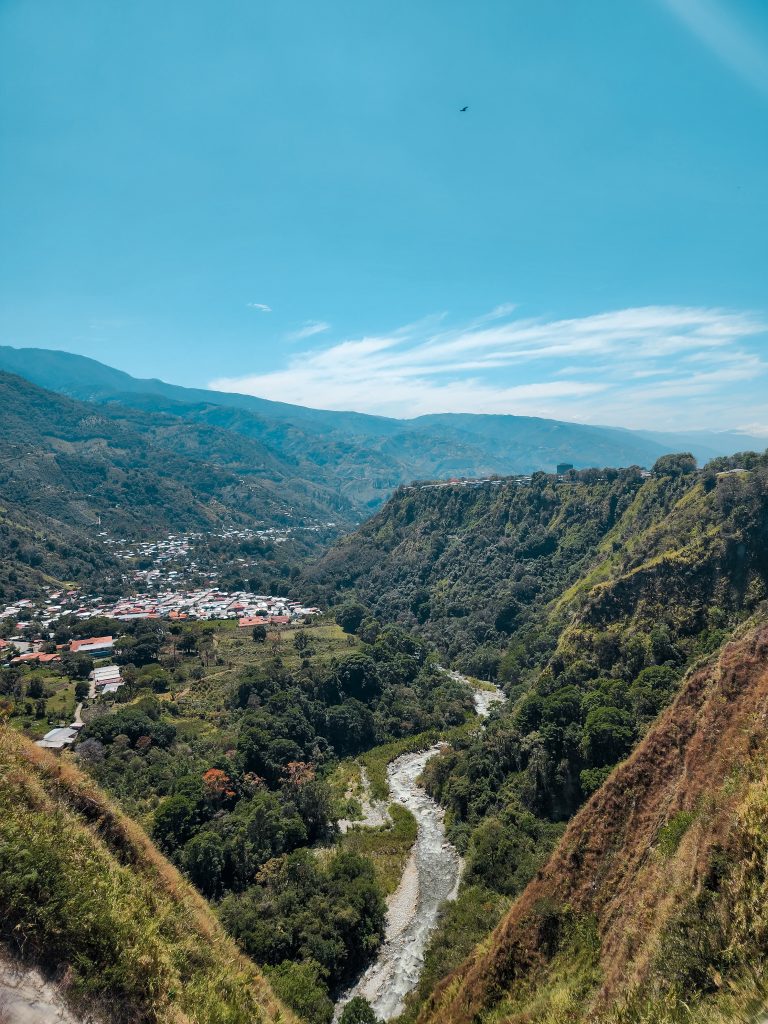
Hiking opportunities in the surrounding Andes mountains: Mérida is surrounded by stunning natural beauty, offering numerous hiking opportunities for outdoor enthusiasts. Explore the nearby Sierra Nevada National Park, home to diverse flora and fauna, and hike to the stunning Laguna de Mucubají or the imposing Pico Bolívar, Venezuela’s highest peak.
The rate I was given to hike Pico Bolivar was USD 250 which included a ticket to the Cable car so, you can hit 2 birds 2 with 1 stone there.
Hot Springs: For a day trip from Mérida to hot springs, consider visiting the thermal waters of Aguas Termales de Mucuchíes or the Balneario de La Musui. I enjoyed this day trip and recommend it,
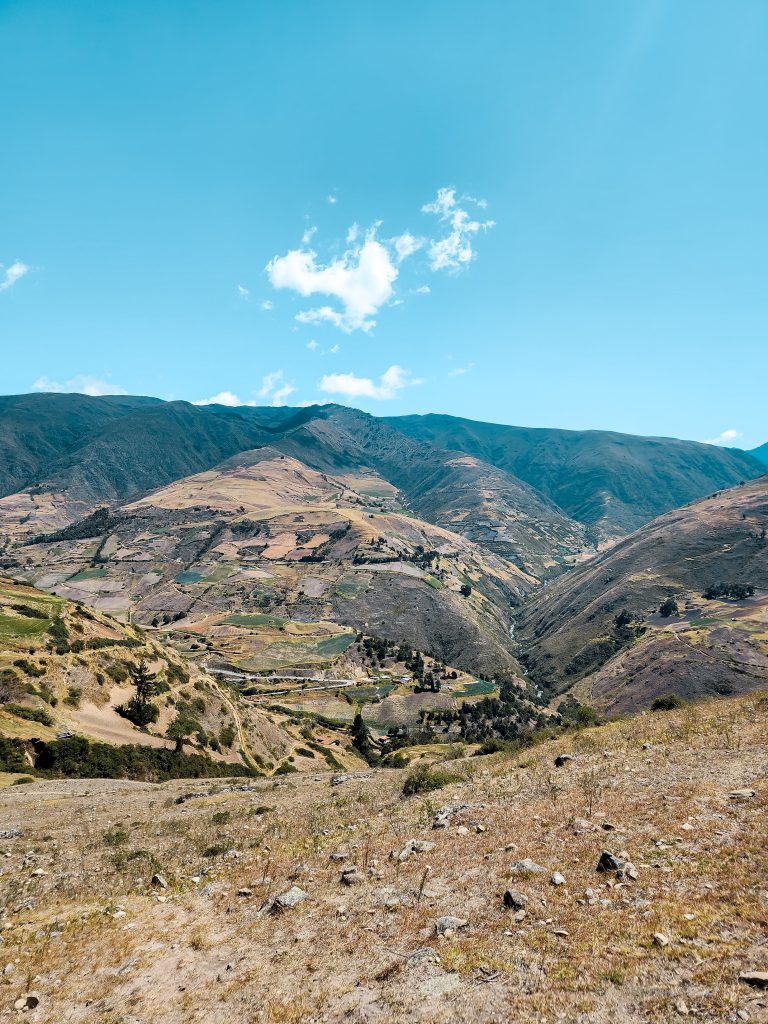
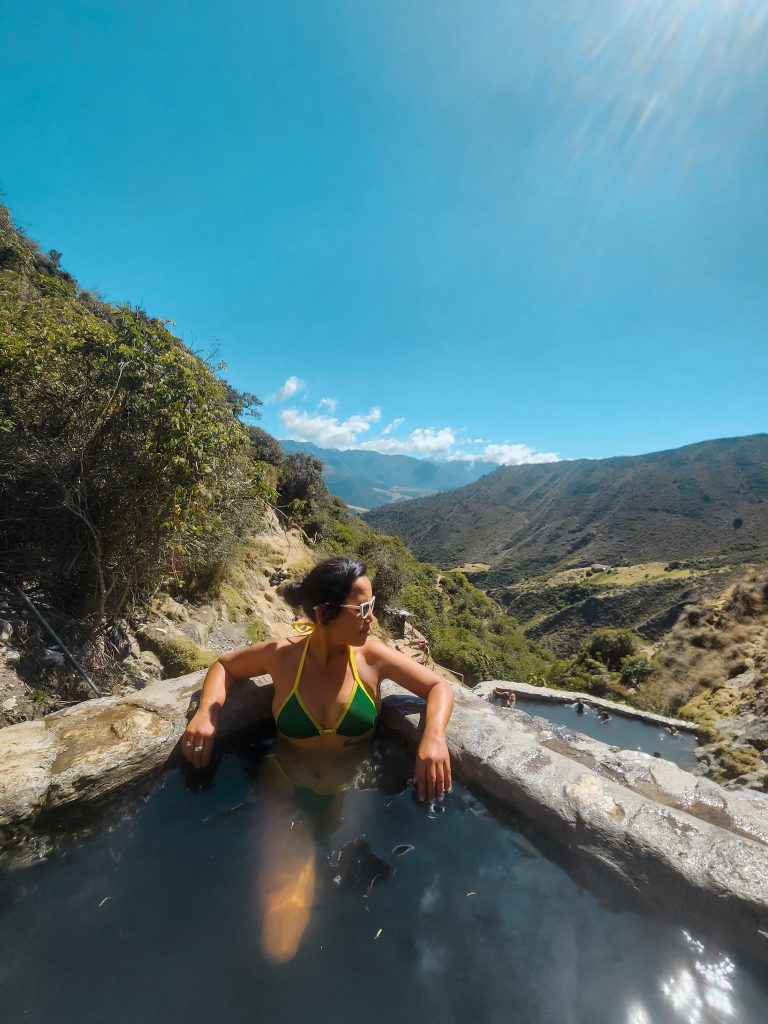
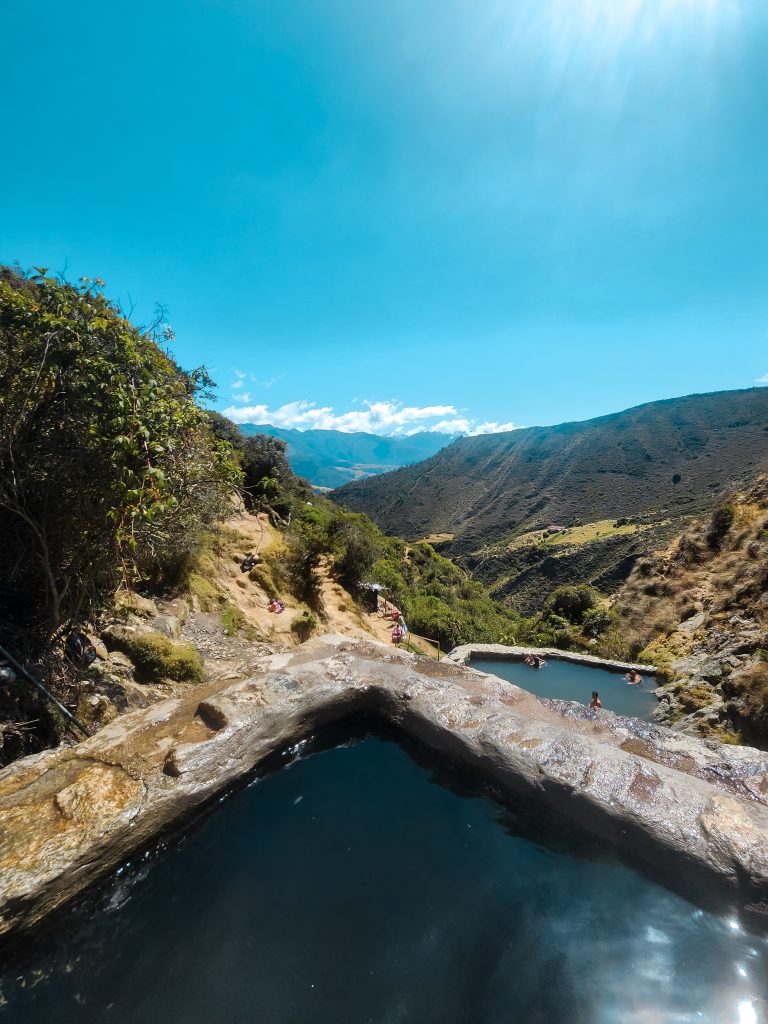
Drive or taxi is the easiest but there is also a local bus that goes straight from Merida to the entrance of Aguas Termales de Mucuchíes (check out the bus stop near the I love Merida sign not the main bus terminal.) but the entrance is still far away from the start of the trial. Got lucky w hitchhiking or it would be a hard walk up the road to the car park – the entrance where you register your names for the hike – then the hot springs.
The drive to the hot springs will take you through picturesque Andean landscapes, offering stunning views along the way. Note that it’s about an hour’s hike to get to Mucuchies Hot Springs from the car park but when you finally get there you will see it’s all worth it! There are two decks of hot springs that you can soak in the warm, mineral-rich waters. The hot springs are known for their therapeutic properties and are a great way to relax and unwind.
Optional activities: In addition to hiking and exploring the town, you can also enjoy other activities such as horseback riding, mountain biking, or visiting local coffee farms to learn about the region’s coffee production.
Mérida’s unique blend of natural beauty, culture, and outdoor adventures makes it a must-visit destination in Venezuela.
If you are short in time, leave Merida a day earlier so you can still catch some waves, beach time in Choroni,
Day 8-10: Choroni
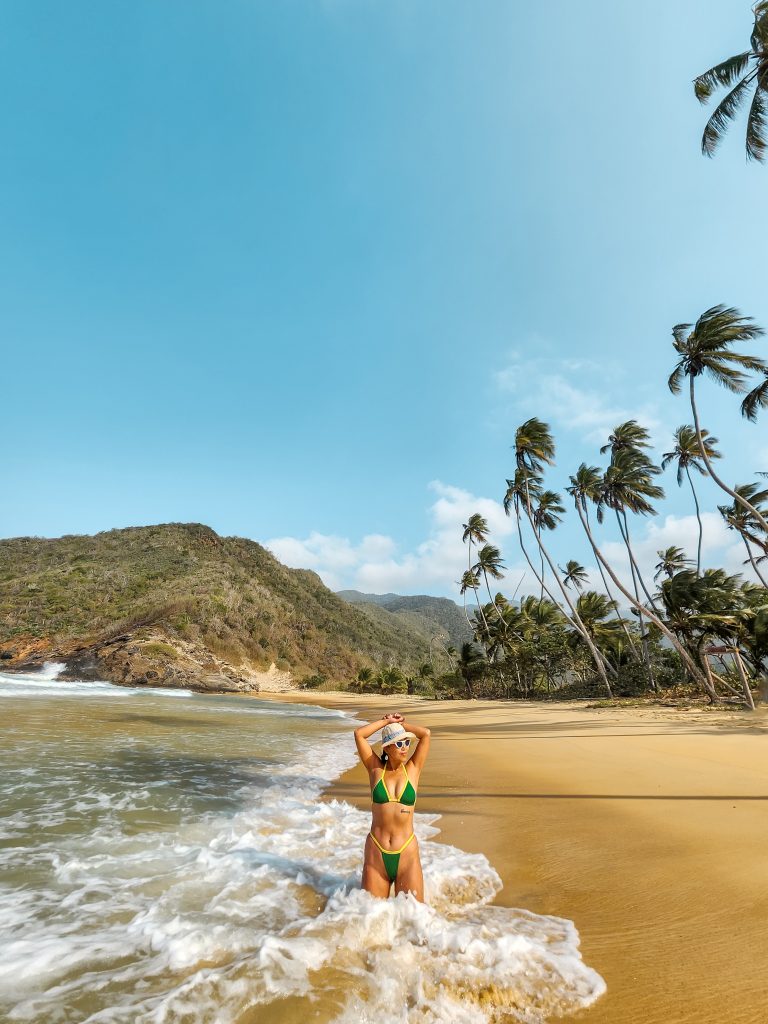
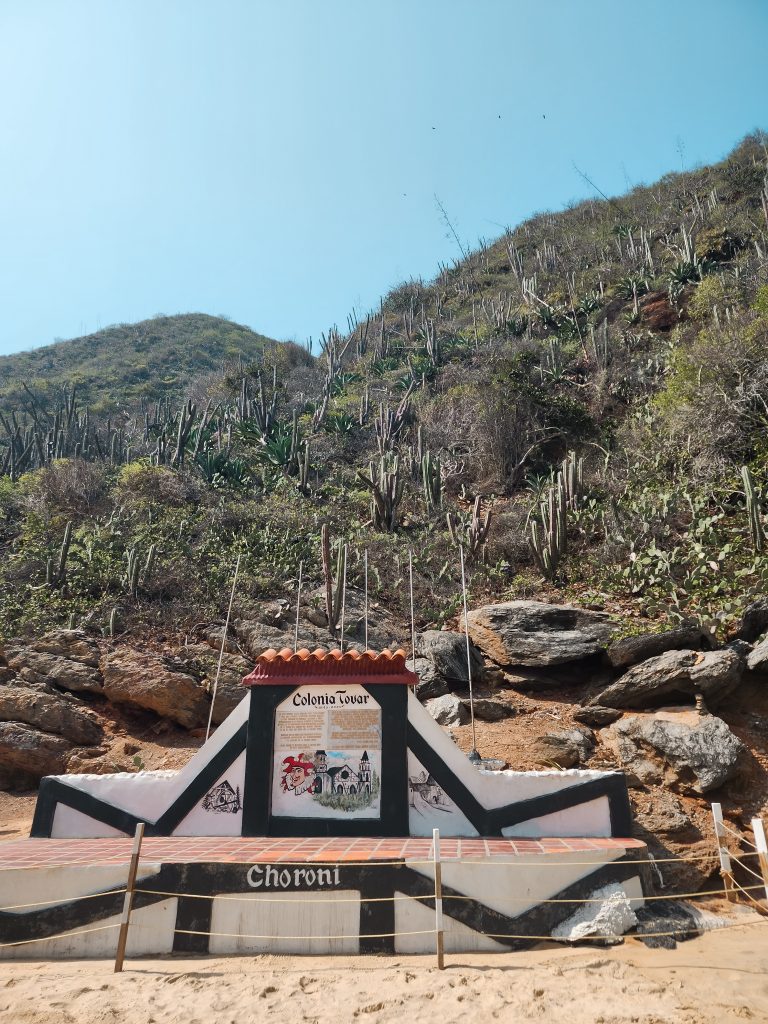

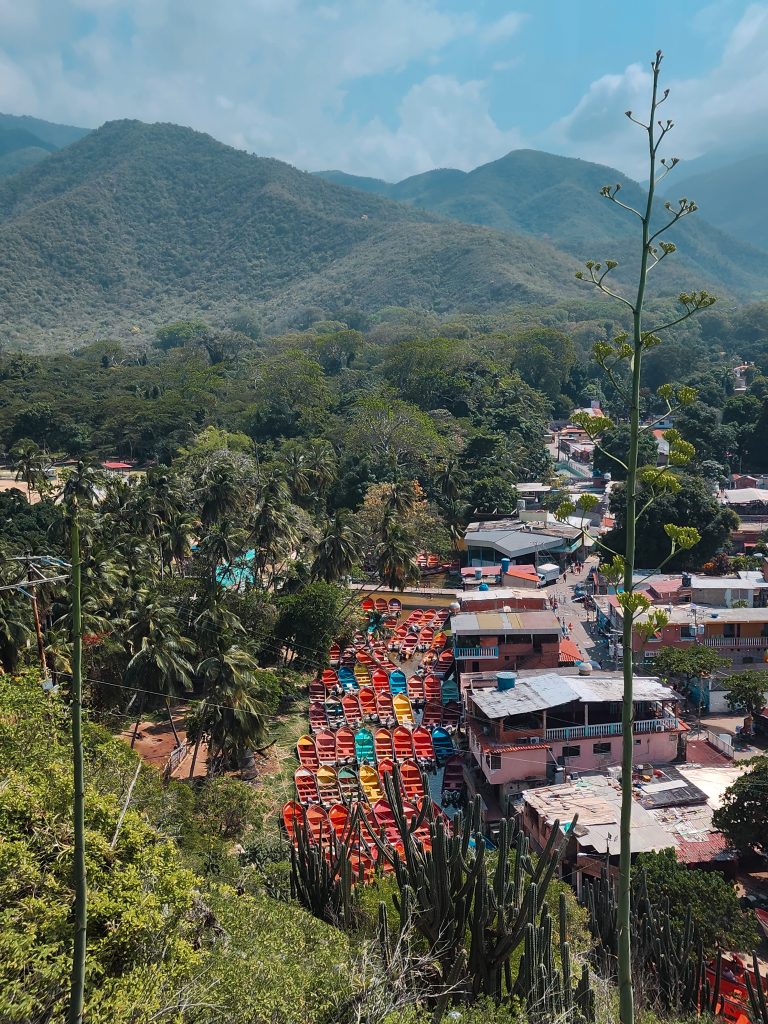

I then took another night bus from Merida and went to Choroni for my backpacking Venezuela travel itinerary.
I mentioned above, I didn’t choose other famous islands or beaches because I wanted to experience a hidden gem in Venezuela and enjoy some tranquility towards the end of my trip.
Choroni is a charming coastal town known for its beautiful beaches, lush rainforests, and vibrant Afro-Caribbean culture.
Where to stay in Choroni, Venezuela?
Check this out for recommendations on where to stay in Choroni, Venezuela. Check on Airbnb if you can’t find anything suitable. If you still can’t find anything for your budget in Airbnb, go on Google Maps and Type “Posada” (these are what Bed and breakfast, and guest-type accommodations are but most are not in booking dot com) message/ email them directly or book it on google if that option is available but I would still encourage to email to have written confirmation of your stay.
Things to do in Choroni
Travel to Choroni: Depending on your starting point, you can reach Choroni by bus or car. Once you arrive at the Choroni terminal, you can either get a private or shared taxi to the coast. It’s a windy road but only an hour. The journey will take you through lush landscapes and picturesque mountain roads, offering stunning views along the way.
Explore Choroni: Spend your days in Choroni exploring its pristine beaches, such as Playa Grande and Playa Chuao. Relax on the sandy shores, swim in the turquoise waters, and soak up the sun. Playa Grande is 5-10 minutes walk from town. You can also visit the local market to shop for souvenirs and sample local cuisine – recommend the fish dishes here.
Climb a hill: While in Choroni, you will see a hill at the right end of the coast. Wander through Choroni’s colorful streets, lined with colonial-era buildings and vibrant murals then hike up the hill for beautiful sunset views. I felt safe walking around town and hiking and there were locals and visitors too.
Hike to a Waterfall: Choroni is surrounded by lush rainforests, offering plenty of opportunities for hiking and nature exploration. Consider taking a hike to one of the nearby waterfalls, such as Cascada El Chorreron or Cascada del Vino, for a refreshing dip in the natural pools.
Visit a Cocoa Plantation: if you are staying longer, check out the nearby Cocoa plantations, which produce some of the finest cocoa beans in the world. Take a tour of a cocoa plantation to learn about the chocolate-making process and sample some local chocolate.
Relax and Unwind: Choroni is the perfect place to relax and unwind, away from the hustle and bustle of city life. Spend your evenings watching the sunset over the ocean or listening to live music at a beachfront bar.
Early morning on Day 10 back at the airport. It is only a 3-5 hours drive from Choroni to Caracas International Airport but leave early as you never know with traffic etc. I left around 7 AM and arrived at the airport around noonish, way earlier than necessary for my flight but better to be safe than sorry..
I hope my Venezuela travel guide helped you. It really is one of the most interesting countries to consider on your South American journey.
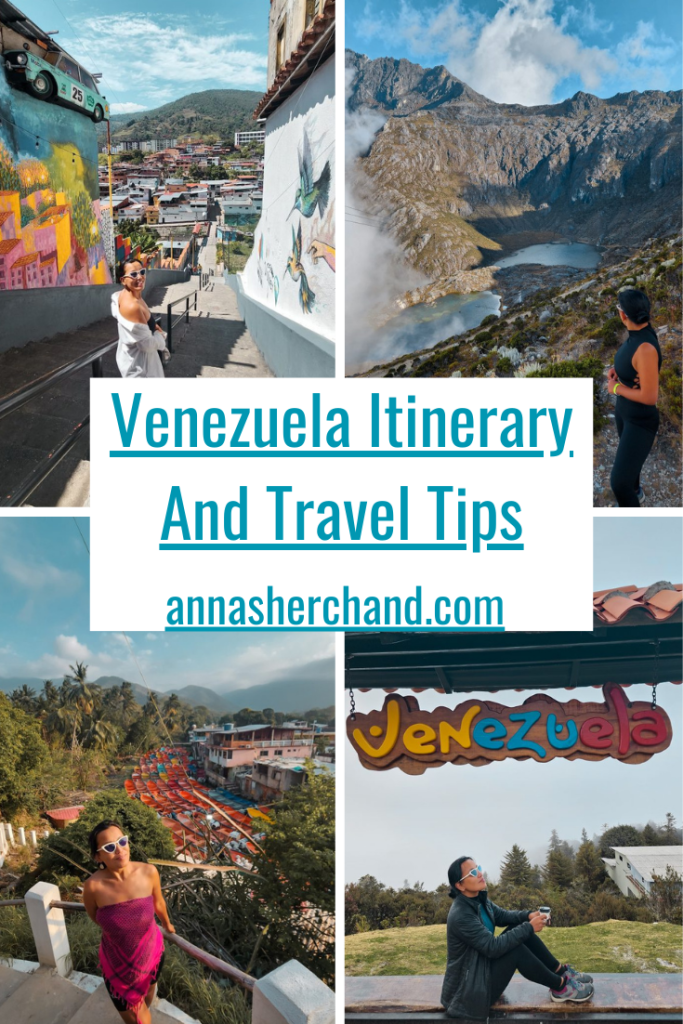
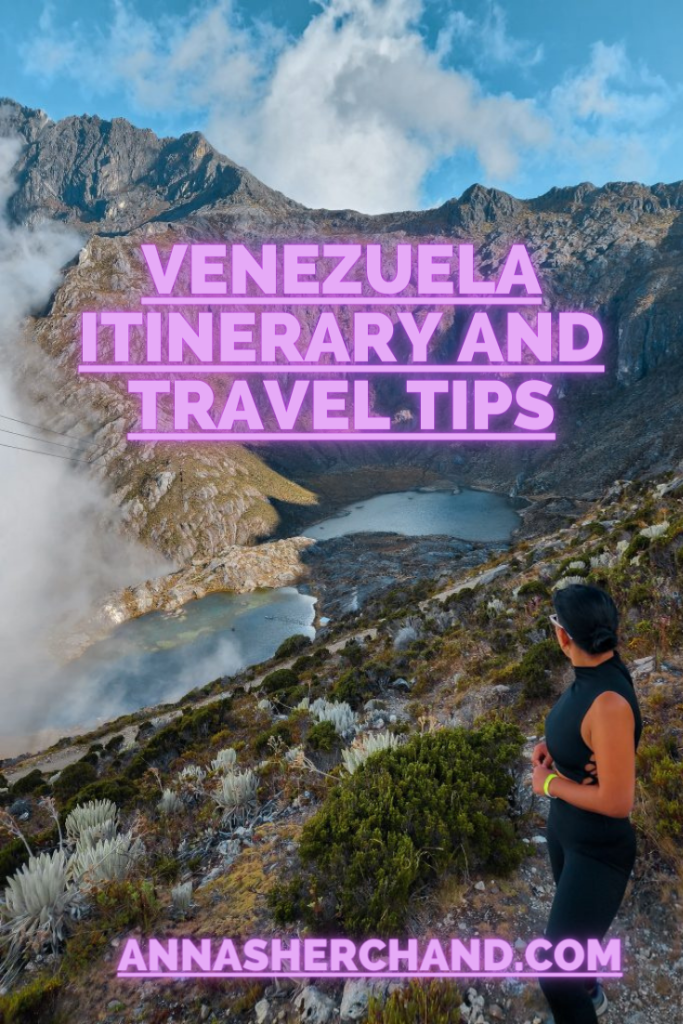
Let me know in the comments:
If you have any questions about this Venezuela itinerary and travel tips
Chile itinerary 3 weeks
1 week in Seoul
5 days in Uruguay itinerary
Solo female travel to Georgetown Guyana
Backpacking one month in Central America itinerary
Solo trip to Peru One month itinerary
Solo female travel Colombia
7 days backpacking in Ecuador itinerary
5 days in Oaxaca itinerary
2 days in Mexico City itinerary
7 Days Itinerary in Georgia
4 Days in Azerbaijan Itinerary
Best places to visit from Split
2 days in Split, Croatia
Solo traveling to Mostar
Solo female travel to Kotor
Solo female travel to Budva
Solo female travel Albania
Warsaw by Train covers warsaw travel tips
Check out One day in Luxembourg, western Europe
Day trip from Zurich to Liechtenstein
Travel tips to South America
Fiji solo travel guide
Australia east coast must-see
Backpacking in Melbourne, Australia
Digital nomad guide to Melbourne
14 best area to stay in Melbourne CBD
Master Sydney travel guide
Solo travel guide to Brisbane
Exploring Adelaide the best way is a must-read
Important travel tips for Uluru trip
Melbourne day trips in winter
Day Hikes in Melbourne
Weekend getaway? Check out things to do in Ballarat
Perth solo itinerary
Top 5 must do in Darwin, Australia
How to go from Dublin to Howth
Solo female travel Romania
Read a recent day trip to Zaanse Schans from Amsterdam
How about a solo itinerary to Canberra– Australia’s capital city?
Solo trip to Peru, travel tips to South America
Check out the 7 days Hanoi travel guide.
Book accommodation through trusted Booking.com
I have detailed travel resources right here. Save money, learn what and how.
If you like this article, follow my adventures on Instagram, Facebook, YouTube, Twitter, and Pinterest, or read about me travel blogger from Australia but most importantly sign up to my e-mail list to keep up with updates and travel posts!

Thank you for sharing such helpful insights! I’ve bookmarked your blog and look forward to visiting again for more great tips.
Thanks for sharing such helpful insights! I’ve bookmarked your blog and look forward to visiting again for more great tips.
Thnx for excellent information. I want to visit in February 2025. Much information says do not go. My concern is still at airport.
You’re welcome! Pls feel free to elaborate what’s the concern w airport.